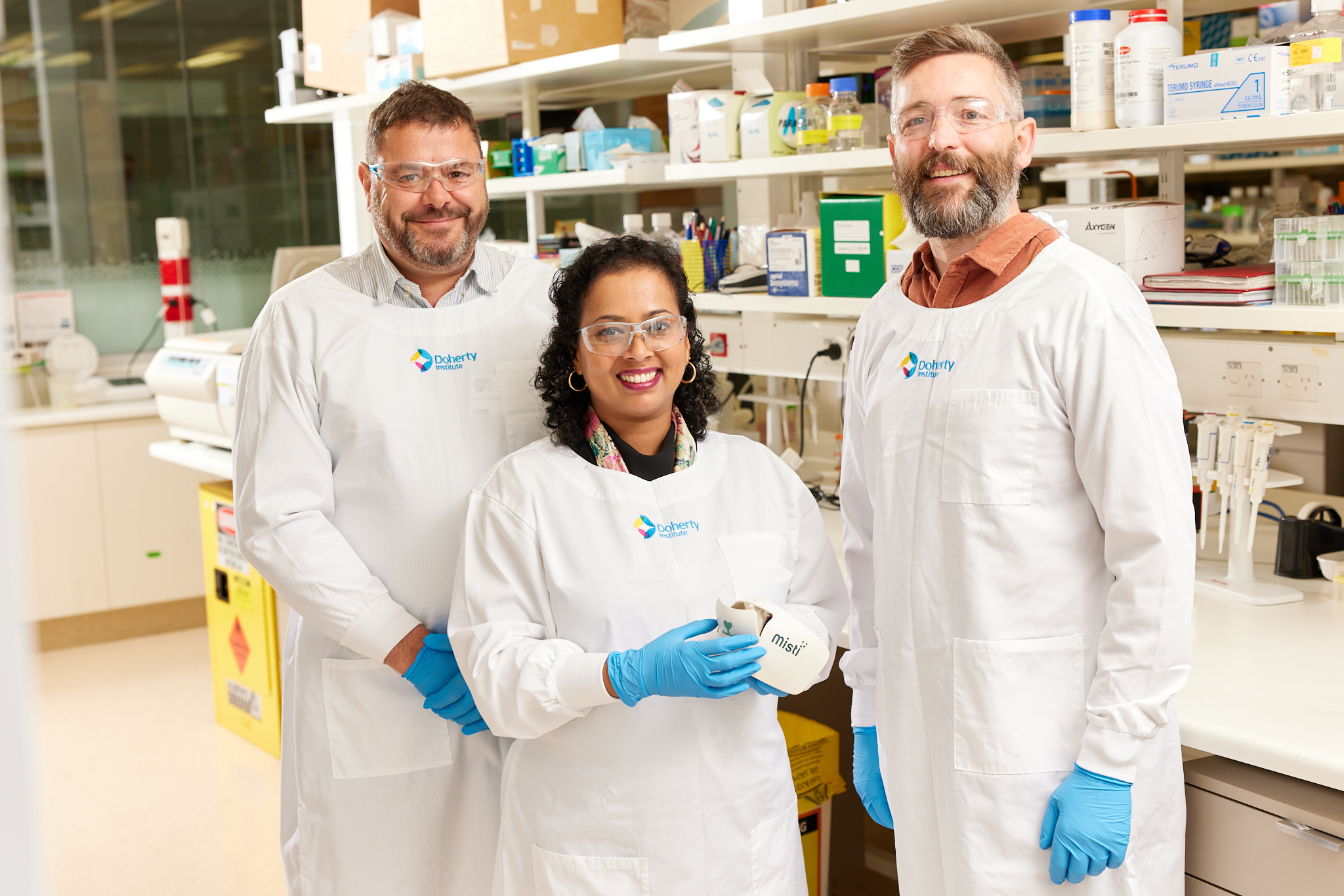Misti’s acoustic nebuliser mask offers child-friendly, efficient respiratory relief, reducing hospital visits and waiting times.
When a child’s sniffles turn into coughing, then hacking, their condition worsens. It could be minor, or something more. As their discomfort grows, so does their parents’ stress, leading to a visit to the GP for relief and peace of mind.
Globally, 545 million people visit clinics annually with severe respiratory conditions. Among children, respiratory syncytial virus (RSV) is the leading cause, responsible for over 60% of acute respiratory illnesses, and can result in lower respiratory tract infections like pneumonia. RSV hospitalises 3.6 million children each year, with 1 in 5 infants visiting the GP for RSV by age 2.
Children experience an average of 12 viral illnesses annually, leading to missed school days, doctor visits and parents taking time off work. Early respiratory care can reduce this cycle with treatments that are accessible, effective and effortless – and that can be administered at home.
Inhalation therapy offers fast relief for children with viral infections by delivering medication directly to the lungs, aiming to reduce symptoms, prevent complications and shorten illness duration. Current at-home solutions often fall short. Nasal sprays may irritate delicate nasal passages, inhaler outcomes can be inconsistent if not used correctly, snot suckers are uncomfortable and only temporarily effective, and steam vaporisers may fail to maintain safe humidity levels.
Medical-grade nebulisers that aerosolise medication can be especially beneficial for young children, as they are easier to use and provide better medication delivery. Most convert liquid medication into a mist using compressed air, ultrasonic vibrations or mesh to form the correct size of droplet. However, these nebulisers can be noisy and may deliver medication inefficiently, with only 50–75% of loaded medication converted to mist, leading to prolonged treatment times and wasted medication.

Melbourne-based MedTech pioneer Misti aims to shield children from respiratory illnesses with MyMisti™, a revolutionary nebuliser technology driven by acoustofluidics and packaged in an easy-to-use mask designed with children in mind. MyMisti™’s breath-triggered, child-sized mask is easy to wear, non-invasive and runs on battery power.
Acoustic nebulisers use high-frequency sound waves to convert liquid medication into a fine mist of drug particles, which can be inhaled directly into the lungs. Unlike traditional nebulisers, they offer greater control over particle size and distribution.
By adjusting the sound waves, the particle size changes, determining the therapy’s delivery location in the lungs. Acoustic nebulisers can produce drug particles 1–3 microns in diameter, which can reach the lower airways and deep into the lungs. With 90–95% delivery efficiency, acoustic nebulisers deliver a large aerosol dose to the lung within a relatively short timeframe.
Additional respiratory applications for Misti’s technology include the treatment of asthma and chronic obstructive pulmonary disease (COPD), with improved delivery of bronchodilators and corticosteroids for better management. Enhanced delivery of antibiotics and antiviral drugs directly to the site of infection in the lungs can aid in treating infectious diseases, and delivering genetic material to lung tissues can help treat genetic disorders affecting the respiratory system.
Misti’s acoustic nebuliser technology will improve the treatment of childhood respiratory diseases. By providing a more child-friendly inhalation therapy easily administered at home, MyMisti™ has the potential to soothe children in respiratory distress, reduce hospital visits and waiting times for parents, provide long-term savings on costly treatments and get kids back to being kids.
